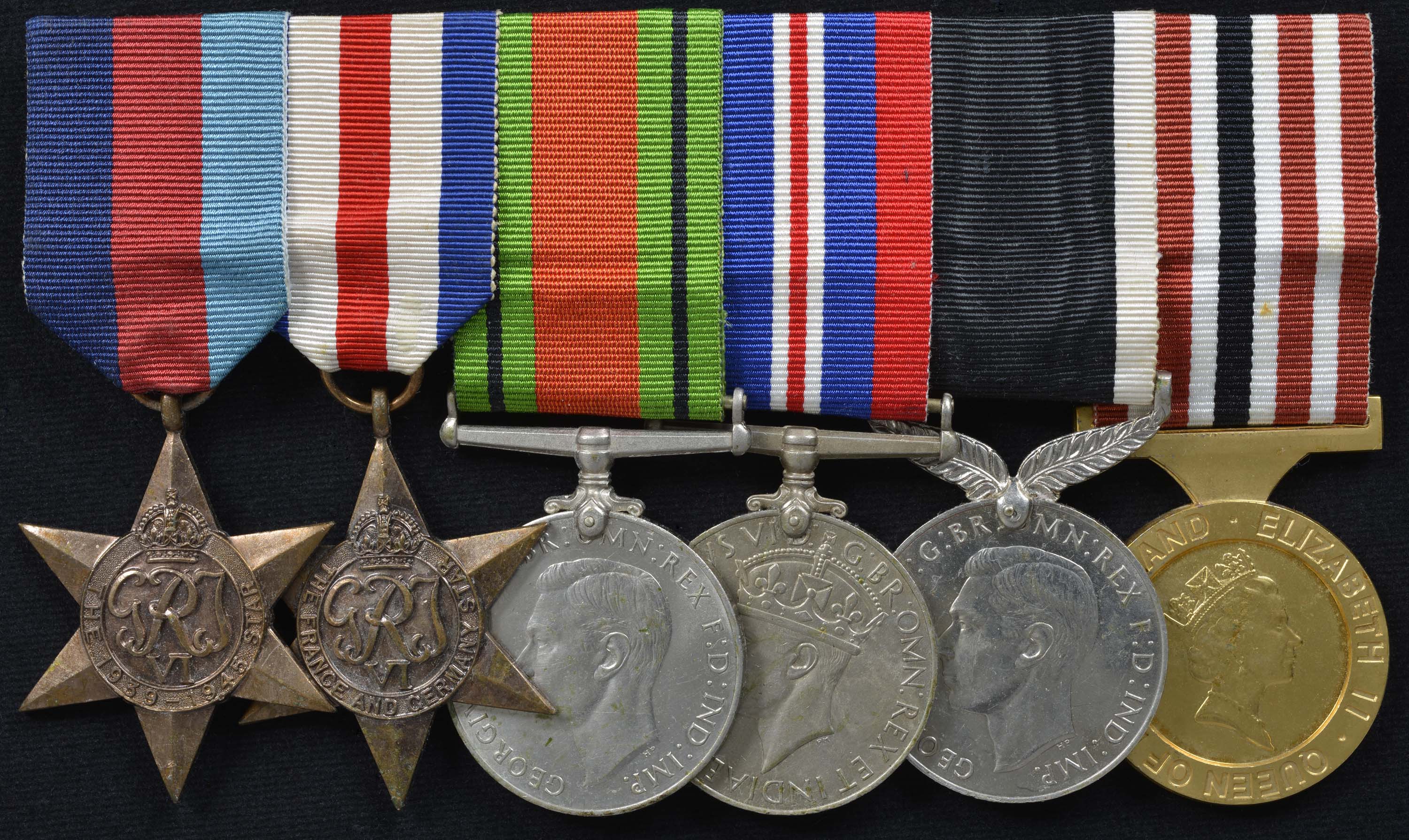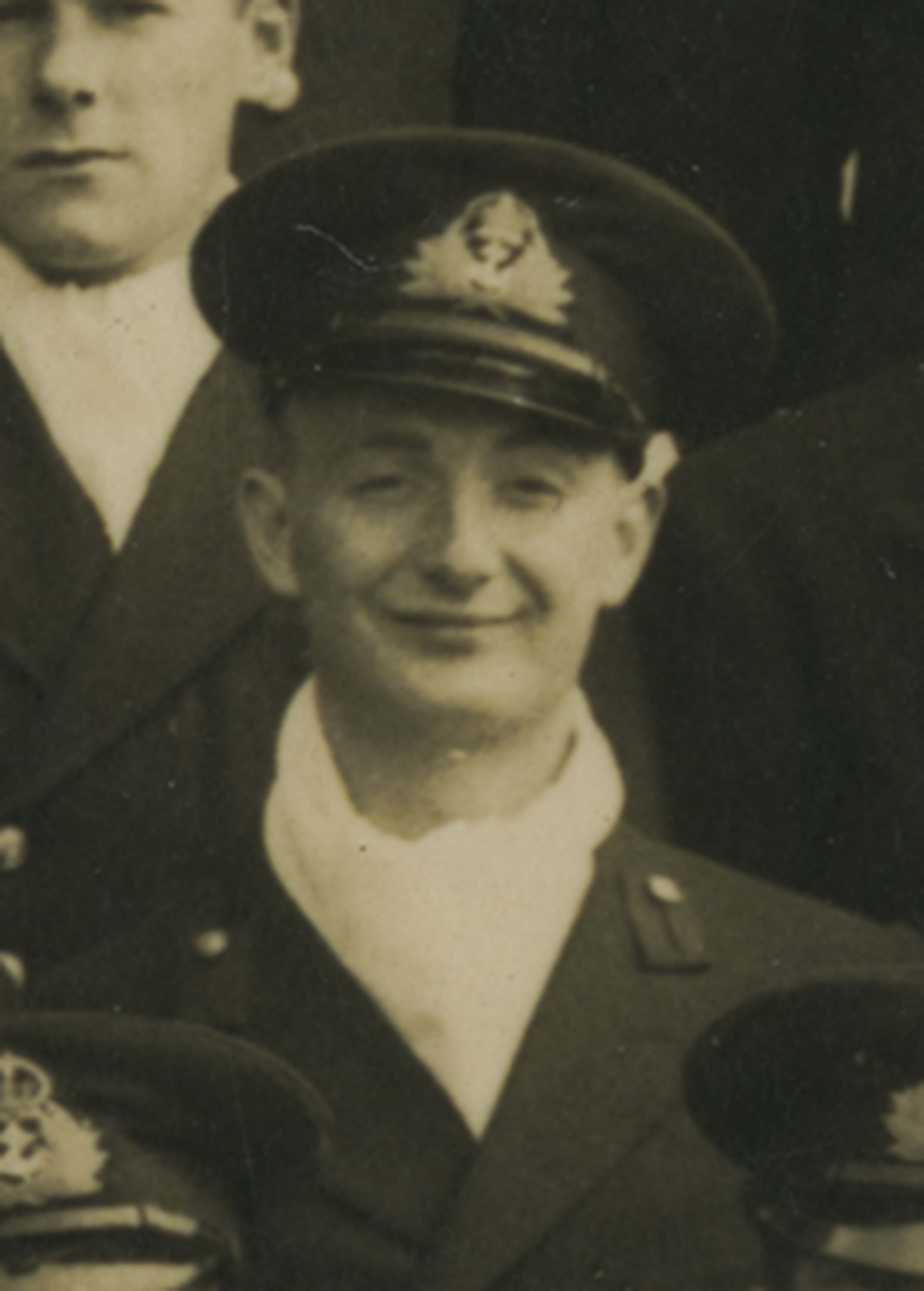

Display No. 12G
NORTHOVER, Neville John
Neville Northover joined the Territorial Army during the Second World War in 1940, aged 17. Having lied about his age when joining, he only managed a few months in training before his deception was discovered and he was returned to civilian occupation in December. He rejoined the Territorials in October 1941 before transferring to naval service in June 1943 as part of ‘Scheme B’. The scheme selected men for seamanship training in the United Kingdom with a view to quick development and subsequent promotion to officers.
Between July 1943 and April 1944 Northover was posted to HMS Drake for training. He then entered specialist motor launch training in HMS Hornet and anti-submarine training in HMS Seahawk. This training readied him for his final posting in HMS Philoctetes and the 123 Motor Launch Flotilla based in Sierra Leone, West Africa. He remained in West Africa for the remainder of the war taking part in submarine escort duties and submarine ‘hunting’ as an officer of ML 279 (‘B’ Class Fairmile motor launch). Northover returned to New Zealand in September 1945.
Awarded medal(s)
Medal Description [Left to Right]:
The 1939-1945 Star
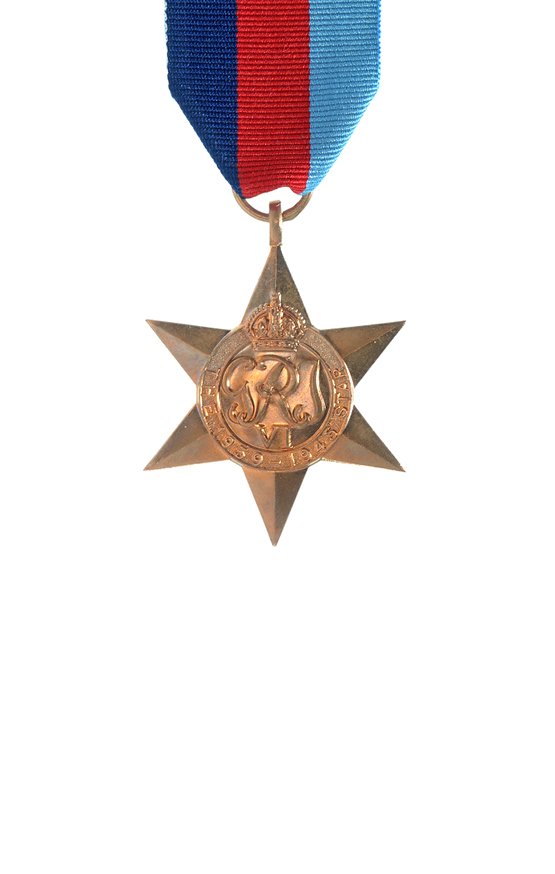
The 1939-45 Star is the first in a series of eight campaign stars instituted in 1945 to recognise service in World War Two. The ribbon has three equal vertical stripes of dark blue, red and light blue. The dark blue stripe symbolises the service of the Navy and the Merchant Navy, the red stripe symbolises the service of the Army, and the light blue stripe symbolises the service of the Air Force. The equal width bands represent the equal contributions of the three service arms towards victory. The ribbon was devised by King George VI. Two clasps could be awarded with this medal: ‘Battle of Britain’ and ‘Bomber Command’. Only aircrew would qualify for these clasps although a small number of Fleet Air Arm naval pilots flew for the air force and would be eligible for the ‘Battle of Britain’ clasp.
The France and Germany Star
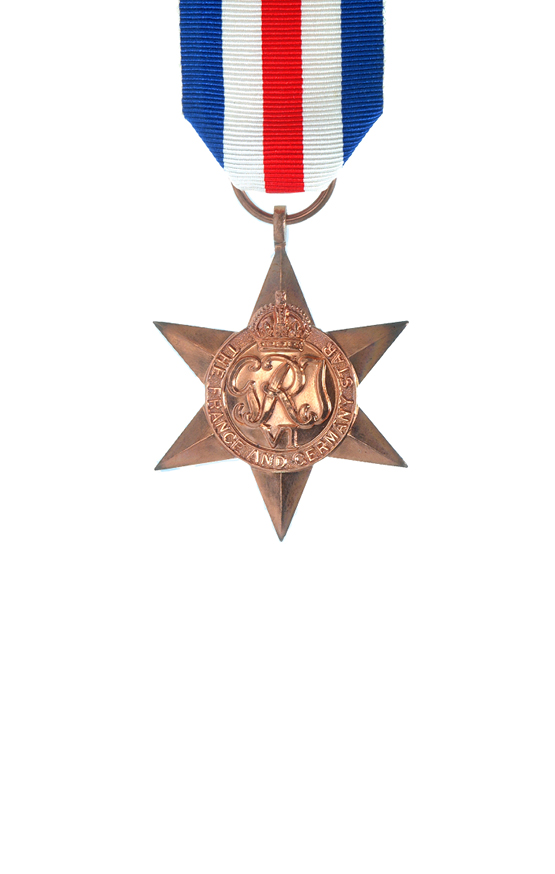
The France and Germany Star was awarded for service in the Second World War in France, Belgium, the Netherlands, Germany and adjacent sea areas, between 6 June 1944 and 8 May 1945. An ‘Atlantic’ clasp could be awarded with this medal. Personnel who qualified for both the France and Germany and the Atlantic Stars were awarded the first star but only a clasp in respect of the second. The ribbon uses the colours of the Union Jack; red, white and blue, which are also the national colours of France and The Netherlands.
The Defence Medal
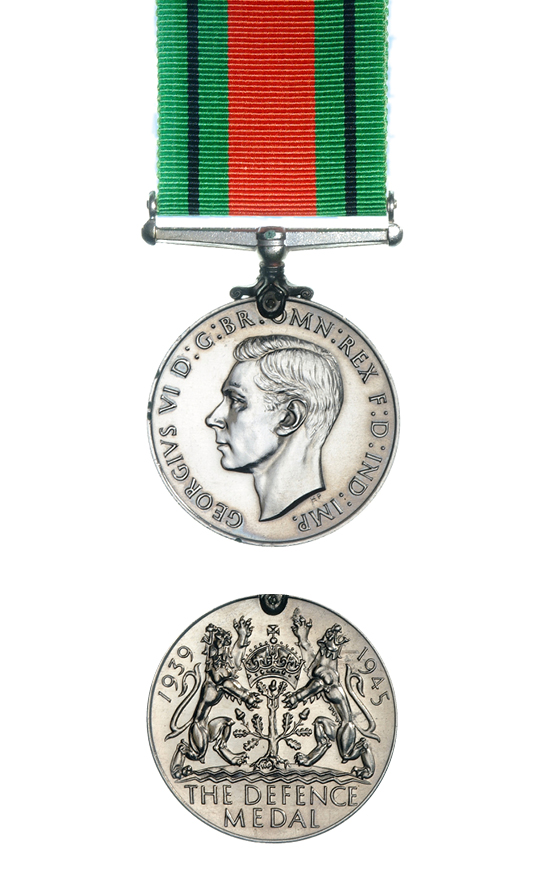
The Defence Medal was awarded to British and Commonwealth forces who served during the Second World War. It was awarded to New Zealand military personnel who served overseas in a non-operational area such as Great Britain, Palestine or Fiji. The ribbon’s flame-coloured orange centre band and green edge bands symbolise enemy attacks on Britain’s green and pleasant land. The narrow black stripes represent the black-outs against enemy air-attacks.
The War Medal 1939-1945
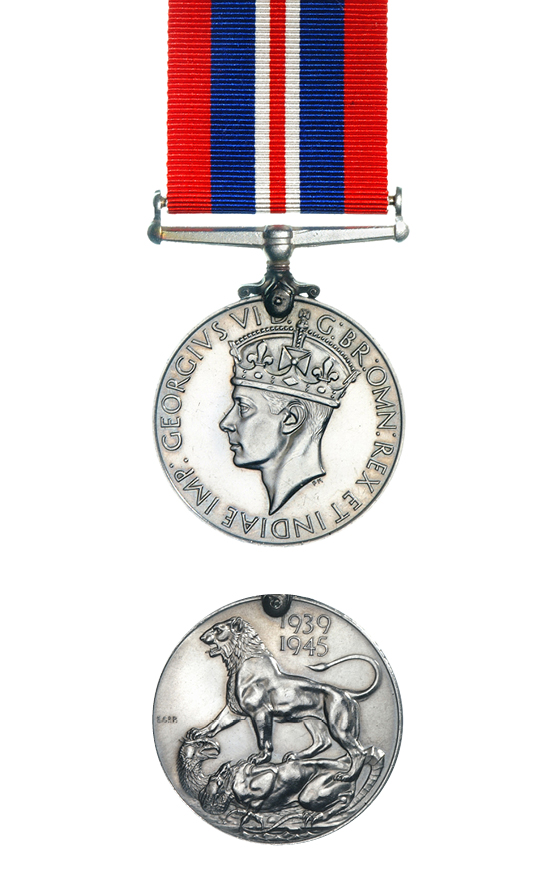
The War Medal 1939-45 was awarded across the British Commonwealth to all full-time members of the Armed Forces in the Second World War for 28 days service between 3 September 1939 and 2 September 1945, irrespective of where they were serving. The ribbon is the red, white, and blue of the (British) Union Flag. There is a narrow central red stripe with a narrow white stripe on either side. There are broad red stripes at either edge, the two intervening stripes being blue.
A bronze oak leaf on the medal ribbon denotes that the recipient was Mentioned in Despatches. To be Mentioned in Despatches a member of the armed forces had their name mentioned in an official report, written by a superior officer, and sent to a higher command. The report would describe the individual’s gallant or meritorious action in the face of the enemy.
The New Zealand War Service Medal
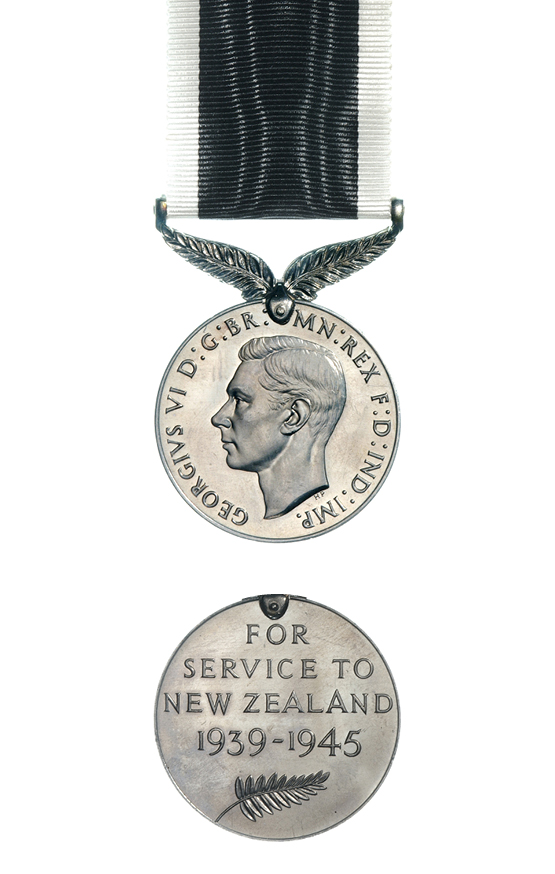
The New Zealand War Service Medal was awarded for 28 days’ full time service or six months’ part time service in the Second World War in any of the New Zealand Armed Forces including the Reserves, Naval Auxiliary Patrol Service, or Home Guard, between 3 September 1939 and 2 September 1945.
New Zealand 1990 Commemoration Medal
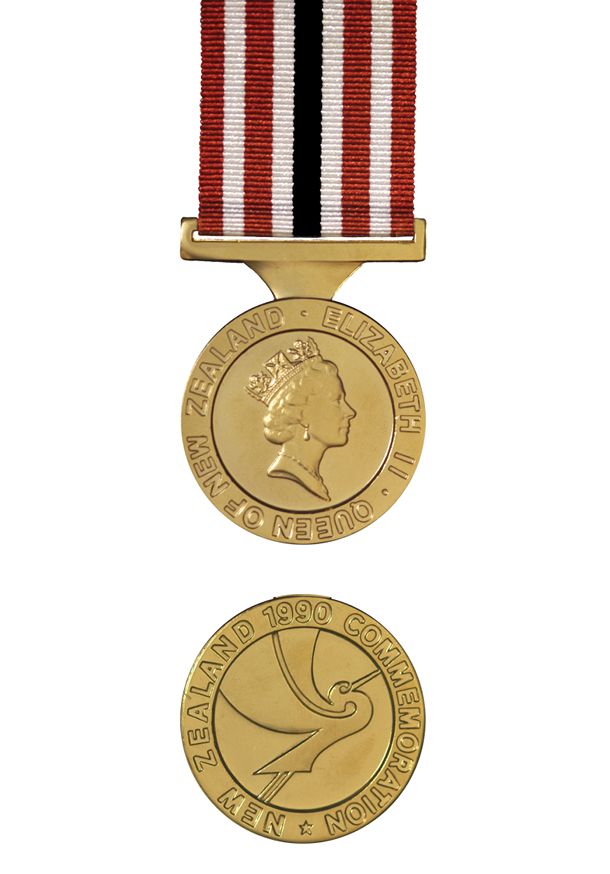
A commemorative medal awarded in New Zealand in 1990, to celebrate the 150th Anniversary of the signing of Te Tiriti o Waitangi – the Treaty of Waitangi. It was awarded to around 3000 people to recognise their contribution to the country.

